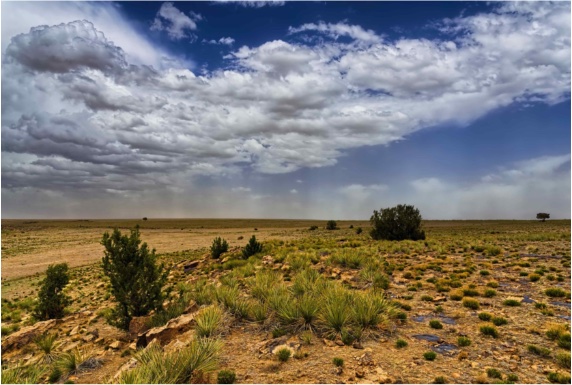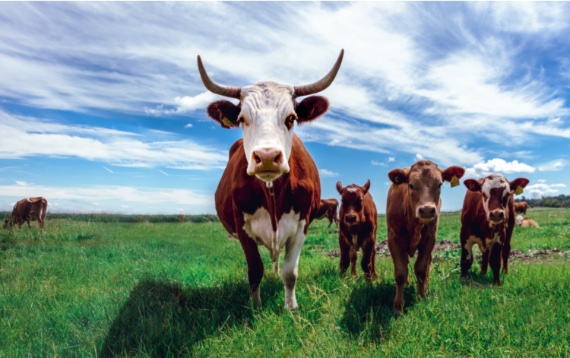Our planet is losing biodiversity at a rapid rate. The rate of species extinction has increased 100-fold in recent centuries, and will rise tenfold in the near future; vertebrate populations have declined by 68% since 1970, and one million animal and plant species are currently threatened with extinction. In addition to human action in general, which is responsible for this decline, there is the particular impact of climate change, which profoundly alters ecosystems, forcing species to adapt, migrate or die. But while many animals are the helpless victims of climate change, they could also be the heroes: according to scientists, reintroducing wild animals to the places they once occupied—one of the strategies of so-called rewilding—would not only restore ecosystems, but could even help combat climate change.
While no order of terrestrial life appears to be unscathed by the actions of humans on the natural environment, scientists say large animals are particularly hard hit by climate change and other environmental pressures. “The megabiota [large animals and plants] are disproportionately impacted by land clearing, landscape fragmentation, hunting, overfishing, selective logging, human conflict, and climate change,” summarises a 2020 study published in Nature Communications, highlighting how populations of species in this category are steadily declining. The disappearance of these large living creatures, the authors note, in turn has a cascading effect on the ecosystem in general, and on climate change in particular.
The study’s director, Brian Enquist of the University of Arizona, says that “protecting big, charismatic species does have an umbrella effect to protect the wider ecosystem.” Enquist draws an analogy with the large banks and financial corporations whose collapse led to the great recession of 2009, and which had to be saved from sinking to avoid greater effects. Similarly, “ecosystems with larger trees and animals are also more productive and provide more vital ecological services.”

For all these reasons, in recent years rewilding has become one of the rising themes in environmental projects, in line with the UN Decade on Ecosystem Restoration (2021-2030). In Europe, the Rewilding Europe project, launched in the Netherlands in 2011 and involving research centres, universities and environmental organisations, is developing nine major initiatives in as many regions of the continent, but also provides a support network for more than 70 other rewilding programmes.
In the USA, the reintroduction of the wolf in Yellowstone National Park is a success story, but there are also other projects such as American Prairie and Southern Plains Land Trust that aim to restore the ecosystem of the North American Great Plains. In Siberia, the Pleistocene Park emerged as the initiative of two scientists to restore the tundra grasslands. Many of these projects are based on the reintroduction of wild animals, particularly large carnivorous or herbivorous mammals.
Grasslands and savannahs to reduce the greenhouse effect
Ancestral grasslands and savannahs are their own ecosystems that support their own ecological networks, which are destroyed if they are transformed into forests. But in Arctic latitudes the problem is even greater. The ancient tundra grasslands support a layer of frozen ground beneath them, the permafrost. In winter, these meadows are covered with snow, which increases the earth’s albedo, i.e. the amount of solar radiation that is reflected; in a simple analogy, white clothes have a higher albedo than black ones, which is why we wear light colours in summer.

With the disappearance of large herbivores, which used to act as natural mowers, forests have colonised much of the former tundra, also facilitated by Arctic warming. Trees reduce the earth’s albedo, which increases solar heating, and also melt permafrost, which releases more greenhouse gases (GHGs), especially methane, which is produced by organic decomposition. This is the idea behind the creation of the Pleistocene Park, where several species of large herbivores have been introduced.
The livestock problem
This is not the only mechanism by which large animals act against climate change. As summarised in a recent review in Current Biology, the consumption of plant mass by these species and the pathways they open help reduce forest fires, the human-caused increase in which emits 0.4 gigatonnes (Gt) of carbon into the atmosphere each year (equivalent to almost 1.5 Gt of CO2). In addition, in temperate and tropical regions, herbivores fertilise the soil, disperse seeds and promote the strength of grasslands, helping ecosystems to store carbon in soils and roots.
In return, methane emitted from enteric fermentation by wild herbivores—the main problem with livestock—would not negate these benefits: according to the study, domestic livestock generate 20% of global methane emissions, compared to 2.2% from wildlife; “any wildlife-related effects are likely to be modest in comparison to global methane emissions from domesticated animals,” the authors write.

“We identify places where biodiversity and climate change goals can be aligned, where they might conflict and where there is more research to be done,” says study leader Yadvinder Malhi, an ecologist at Oxford University. Malhi and his collaborators do not assume that these strategies are valid for all ecosystems, but only for those where such biodiversity-friendly measures can provide benefits against climate change. Another example is marine waters where large animals such as whales help fertilise phytoplankton, which capture about 37 billion tonnes of CO2 per year. These tiny organisms also promote the aerial dispersal of particulate matter, which helps to seed clouds, which in turn increases the albedo of the atmosphere.
However, as Malhi points out, in many cases more research is still needed, for example on the dynamics of soils or deep oceans. More specifically, the ecologist and his collaborators note, there is a lack of evidence to confirm these potential benefits: while “there is a large and diverse body of evidence supporting the concept that large animals influence the climate change mitigation and adaptation potential of ecosystems,” there is still insufficient evidence on effects “at scales significant to the Earth system.” Real-world data can be difficult to obtain, but so far even mathematical simulation models of climate change have not incorporated the factor of large animals. “These are needed to reliably explore the climate change mitigation and adaptation outcomes of restoration scenarios with and without large wild animals on the timescales of decades to centuries.”
Comments on this publication